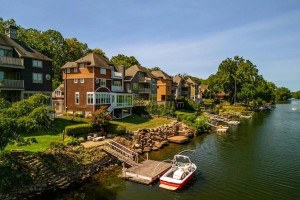More Black Than White Homeowners Still Underwater, Study Finds
Do you live in Stenton, West Oak Lane or Cobbs Creek?
If you do, the odds that you’re paying off a mortgage that’s bigger than your home’s now worth are higher than they are if you live in Somerton, Society Hill or Rhawnhurst.
A recently released study by Zillow examined racial disparities in “negative equity” — homes that are worth less than the mortgages that financed their purchase, also known as “underwater homes.” It found that in the third quarter of 2016 nationwide, homes in majority-black neighborhoods were twice as likely to be underwater as those in majority-white ones: 20 percent of the former vs. 9.9 percent of the latter.
The figures Zillow came up with for Philadelphia hew close to that national average but slightly below it: slightly more homes in white neighborhoods were underwater (10.1 percent), while slightly fewer (19.6 percent) were underwater in black neighborhoods. The percentage of underwater homes in Philadelphia neighborhoods with no racial majority, however, was almost as high as it was in black neighborhoods: 18.4 percent, compared with 11.9 percent of such neighborhoods nationwide.
This may partly reflect the fact that homeownership in general, and minority homeownership in particular, is higher in Philadelphia than in many other large U.S. cities.
Zillow Chief Economist Svenja Gudell said it also reflects the fact that the real estate market in Philadelphia neither rose as sharply nor fell as hard as markets in some other cities.
“Philly certainly saw a housing bubble, but not as big as in Vegas or parts of Florida,” she said. “It was more subdued, so it’s also in the middle of the negative-equity pack.”
According to Zillow Home Value Index figures, median house values in Philadelphia hit a peak of $230,600 in September 2006 and bottomed out at $191,700 in July 2012.
Nationally, Gudell said, much of the discrepancy was driven by the fact that “majority-black and majority-Hispanic communities were often hit much harder by the bursting of the housing bubble than others were, which means that house values fell for a longer time and more drastically than they did in neighborhoods with majority-white homeowners.
“A lot of these neighborhoods have made dramatic comebacks since then, but they had fallen so far that there’s still significant negative equity.”
The harder fall, however, may not have been felt by some of those most affected by it. “For a fair number of homeowners, negative equity is an academic issue,” she said. “If they can make their mortgage payments, negative equity is not a big deal. But if a homeowner wants to move, then it’s a problem.”
Gudell noted that most of the policy weapons that could shrink the gap have already been deployed, in particular the government-sponsored loan modification programs. However, “a lot of those programs modified rates rather than loan amounts,” she continued. The most effective long-term strategy for closing the gap is “helping the neighborhood itself by attracting jobs and new residents who will buy homes. Values will naturally rise and negative equity will recede in that fashion.”
Follow Sandy Smith on Twitter.


